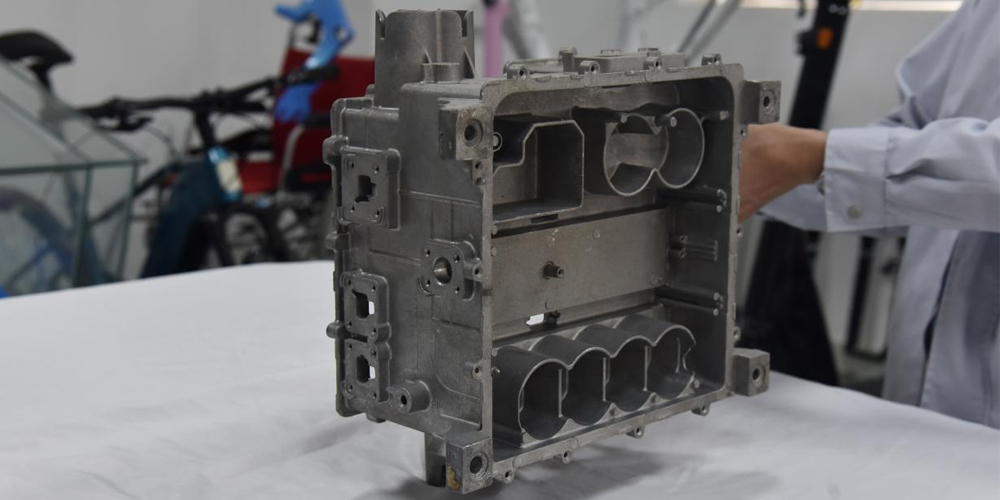Die casting is a widely used manufacturing process for producing complex and high-quality metal parts. It offers several advantages over other manufacturing methods, including high production efficiency, dimensional accuracy, and the ability to produce intricate shapes with excellent surface finishes. However, in order to optimize efficiency and quality in die casting, it is crucial to follow certain design guidelines. This article will discuss some important considerations to keep in mind when designing for die casting.
First and foremost, it is important to understand the basic principles of die casting. Die casting involves injecting molten metal into a steel mold, also known as a die, under high pressure. The molten metal solidifies within the die and takes the shape of the mold cavity. The mold is then opened, and the solidified part is ejected. It is essential to design the part in a way that allows easy and efficient filling of the mold cavity with molten metal.
One important design consideration is the wall thickness of the part. In die casting, thin walls are preferable as they allow for faster and more uniform cooling of the molten metal, resulting in shorter cycle times. However, the wall thickness should not be too thin as it can lead to problems such as porosity and insufficient strength. A general guideline is to keep the wall thickness between 2-5mm for aluminum alloys and 3-8mm for zinc alloys.
Another crucial design aspect is the fillet and rib design. Fillets are curved transitions between two surfaces, while ribs are thin protrusions extending from the main body of the part. These design features help to improve the strength and rigidity of the part. It is recommended to have fillets at the corners and intersections of the part to avoid stress concentrations. Ribs should be designed with a thickness no more than 60% of the adjacent wall thickness to prevent warpage and shrinkage.
Draft angles are also essential in die casting design. Draft angles are tapered surfaces that facilitate the removal of the part from the mold. Without draft angles, the part may stick to the mold, causing difficulties in ejection and potential damage to the part. Generally, a draft angle of 1-2 degrees per side is recommended for most die cast parts.
Furthermore, the location and design of gates and vents are critical for efficient filling and venting of the mold cavity. Gates are the channels through which the molten metal enters the mold cavity, while vents allow the escape of air and gases from the cavity. It is important to place the gates strategically to ensure uniform filling and minimize the formation of air pockets. Vents should be appropriately sized and placed to allow for the smooth escape of air without causing excessive turbulence.
Surface finishes and textures should also be considered in die casting design. Die cast parts typically have excellent surface finishes due to the high precision of the mold cavity. However, certain design features, such as lettering or logos, may require additional post-processing to achieve the desired surface texture. It is important to communicate these requirements with the die caster to ensure the desired surface finish is achieved.
In conclusion, optimizing efficiency and quality in die casting involves careful consideration of various design guidelines. Wall thickness, fillet and rib design, draft angles, gate and vent placement, and surface finishes are some of the key aspects that need to be addressed. By following these guidelines, manufacturers can ensure the production of high-quality die cast parts with improved efficiency and lower costs. Die casting remains a preferred manufacturing method for producing intricate and complex metal parts, and adherence to these guidelines can further enhance its benefits.
-

- Περίβλημα ελεγκτή ανταλλακτικών αυτοκινήτων με χύτευση από κράμα μαγνησίου
-

- Ποδήλατα για παιδιά Παιδικά Ποδήλατα για Παιδιά 3-16 ετών /OEM Baby Children Cycle Kids Mountain Bicycles 2022
-

- Πλαίσιο από κράμα μαγνησίου υψηλής πίεσης OEM για ποδήλατο
-

- Ανταλλακτικά και εξαρτήματα κατεργασμένα με CNC
-

- Χύτευση με κράμα μαγνησίου Ανταλλακτικά αυτοκινήτων Πλαϊνό σκαλοπάτι Σανίδα τρεξίματος
-

- Magnesium alloy bike parts & componenets for kid’s push bike

 0086-750-5616188
0086-750-5616188 +86 13392089688
+86 13392089688 sales@zhongmei-tech.com
sales@zhongmei-tech.com







